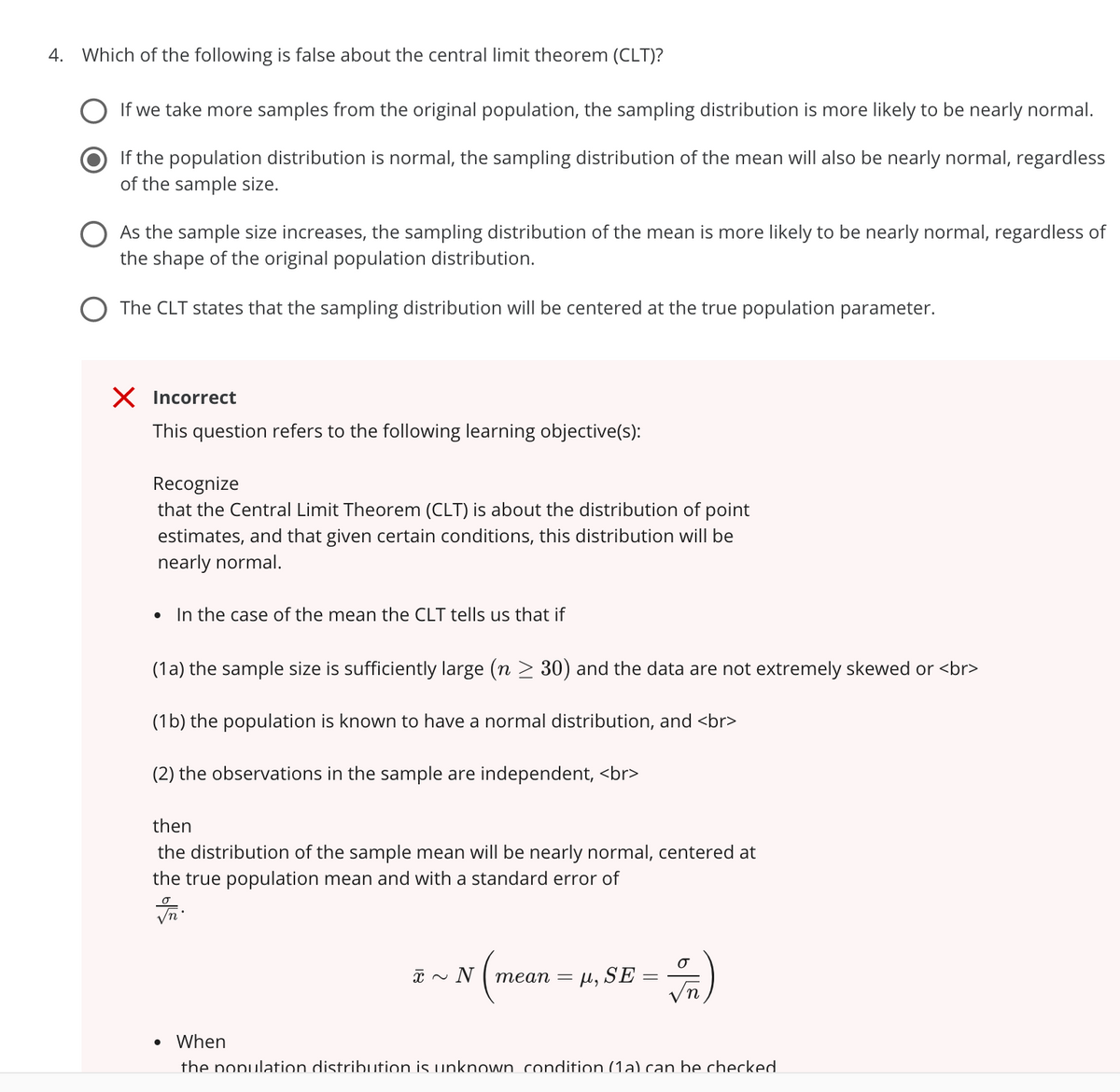4. Which of the following is false about the central limit theorem (CLT)? If we take more samples from the original population, the sampling distribution is more likely to be nearly normal. If the population distribution is normal, the sampling distribution of the mean will also be nearly normal, regardless of the sample size. As the sample size increases, the sampling distribution of the mean is more likely to be nearly normal, regardless of the shape of the original population distribution. The CLT states that the sampling distribution will be centered at the true population parameter.
4. Which of the following is false about the central limit theorem (CLT)? If we take more samples from the original population, the sampling distribution is more likely to be nearly normal. If the population distribution is normal, the sampling distribution of the mean will also be nearly normal, regardless of the sample size. As the sample size increases, the sampling distribution of the mean is more likely to be nearly normal, regardless of the shape of the original population distribution. The CLT states that the sampling distribution will be centered at the true population parameter.
Algebra & Trigonometry with Analytic Geometry
13th Edition
ISBN:9781133382119
Author:Swokowski
Publisher:Swokowski
Chapter10: Sequences, Series, And Probability
Section10.8: Probability
Problem 32E
Related questions
Question

Transcribed Image Text:4. Which of the following is false about the central limit theorem (CLT)?
If we take more samples from the original population, the sampling distribution is more likely to be nearly normal.
If the population distribution is normal, the sampling distribution of the mean will also be nearly normal, regardless
of the sample size.
As the sample size increases, the sampling distribution of the mean is more likely to be nearly normal, regardless of
the shape of the original population distribution.
The CLT states that the sampling distribution will be centered at the true population parameter.
X Incorrect
This question refers to the following learning objective(s):
Recognize
that the Central Limit Theorem (CLT) is about the distribution of point
estimates, and that given certain conditions, this distribution will be
nearly normal.
In the case of the mean the CLT tells us that if
(1a) the sample size is sufficiently large (n > 30) and the data are not extremely skewed or <br>
(1b) the population is known to have a normal distribution, and <br>
(2) the observations in the sample are independent, <br>
then
the distribution of the sample mean will be nearly normal, centered at
the true population mean and with a standard error of
теап — ри, SE -
When
the population distribution is unknown condition (1a) can be checked.
Expert Solution
This question has been solved!
Explore an expertly crafted, step-by-step solution for a thorough understanding of key concepts.
This is a popular solution!
Trending now
This is a popular solution!
Step by step
Solved in 2 steps

Knowledge Booster
Learn more about
Need a deep-dive on the concept behind this application? Look no further. Learn more about this topic, statistics and related others by exploring similar questions and additional content below.Recommended textbooks for you

Algebra & Trigonometry with Analytic Geometry
Algebra
ISBN:
9781133382119
Author:
Swokowski
Publisher:
Cengage

Algebra & Trigonometry with Analytic Geometry
Algebra
ISBN:
9781133382119
Author:
Swokowski
Publisher:
Cengage